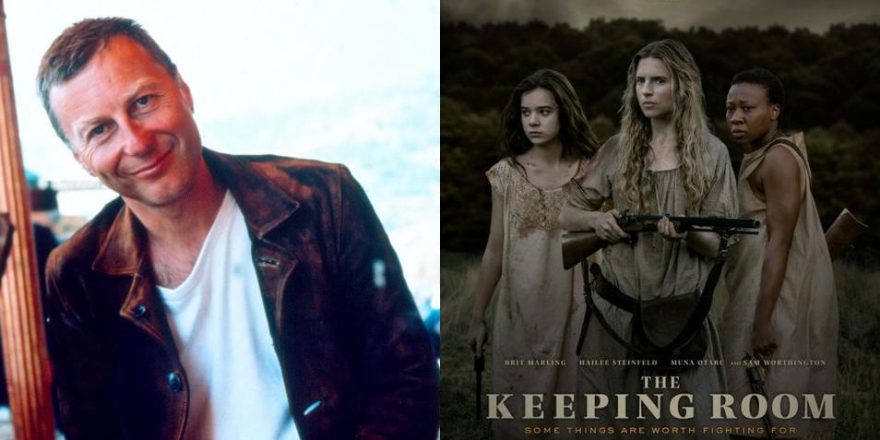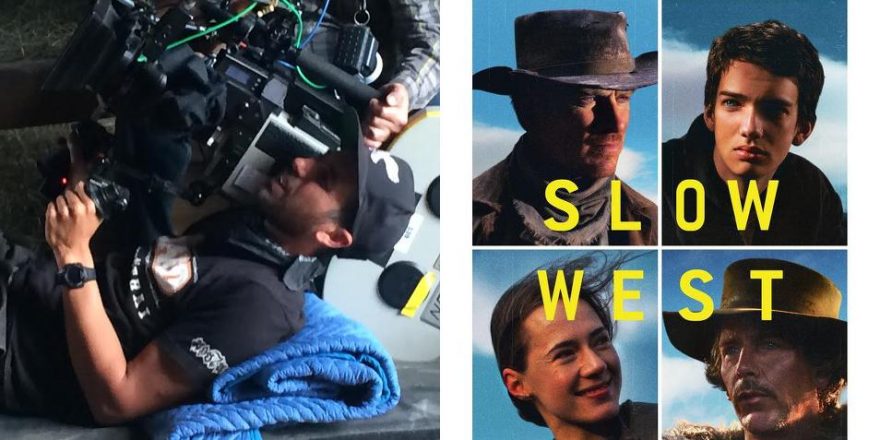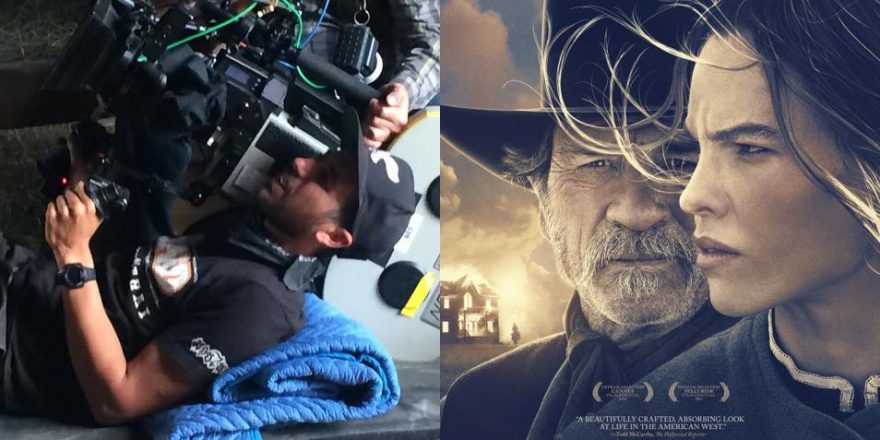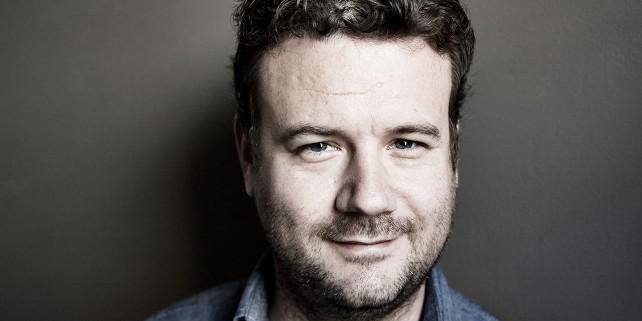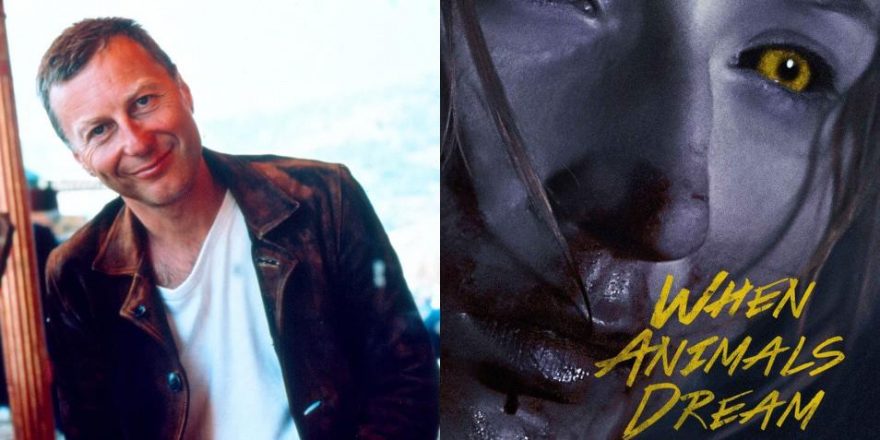The Keeping Room opens with a fascinatingly disturbing build-up of unexpected images and events, without a single spoken word. A poor black woman is laboring under a load of firewood on a dusty country road. She is stopped in her tracks by a vicious black dog, snarling at her. She barks back, starting a barking match. When the barking stops, she looks up. Some 30 paces behind the dog, a stagecoach is waiting silently. The black coachman is trembling. Then the stagecoach door is flung open and a woman in distress runs out. Bang, and a bullet cuts her down. She collapses in a heap. A Yankee soldier (it is 1865, toward the end of the Civil War) emerges from inside the stagecoach. He nonchalantly slings his rifle over his shoulder, buttons his pants, then notices the young black woman observing. He doesn’t change his expression, as if he hasn’t even seen her. Takes a swig from a bottle of whisky. The woman is terrified. It is then that another Yankee soldier enters frame behind the woman, in soft focus. He cocks his gun, but she doesn’t turn to face him. Matter-of-factly he shoots her in the head. The coachman is shaking. The first soldier spits, still without changing his expression, sticks a rag in the bottle, sets it on fire, tosses it into the stagecoach and slams the door shut. Opening credits.
A finely calibrated escalation of menace and terror, silent and mysterious, precisely photographed and delicately acted. This was a promising beginning.
If only the rest of the film lived up to the promise.
The Keeping Room goes on to establish three women, living alone on an isolated farm by the sweat of their brow: the strong-willed Augusta (Brit Marling), her teenage sister Louise (Hailee Steinfeld) and their slave Mad (Muna Otaru). They are surviving in a world ravaged by man-made madness, their father and brother off to war. Augusta soon finds herself in an inhospitable saloon looking for medicine for her sister, who has been bitten by a raccoon. The only patrons are the two renegade Yankee soldiers, Moses (Sam Worthington) and Henry (Kyle Soller), drunk at a table by the window. The proprietor (Ned Dennehy) and his companion (Amy Nuttall) try to warn her of the imminent danger, “before they sober up.” Augusta manages to slink away, to eventually find herself looking down the barrel of her gun at the two renegades in a variation of that beloved Western staple, the Mexican standoff. She gets away, though, and rides back to the farm.
By the next morning, with the help of the medicine, Louise gets better, but the writing is on the wall. Moses and Henry are on her trail and pretty soon they find the remote farm. A Straw Dogs-like defense of the besieged house ensues and the women show that they are capable of holding their own when violence is unavoidable.
The film is not too subtle in its intention to be a paean to feminism in the clothing of a revisionist Western, as the British director Daniel Barber works from a script by Julia Hart. His work is precise and her story unfolds as expected. The pace is languid, as they try to suggest complexity behind the characters when they are subjected to an escalating series of violent events. Unfortunately, the events are not that hard to predict, nor is the resolution of the individual problems facing the three heroines. The filmmakers try to draw distinctions between the three women and they want us to believe that we see changes in them as the story progresses. However, no nerd-to-killer metamorphosis (as with Dustin Hoffman’s math professor in Straw Dogs) takes place, nor are we faced with the shocking violence of that 1971 Sam Peckinpah-directed classic transforming our viewing experience. We are led to believe that the thrills of the unexpected twist in the story or handling of the material should be complemented or substituted by the excitement of delving into the depths of the characters or the revelation of a metaphysical, deeper meaning.
Ingmar Bergman’s The Virgin Spring (1960) (which Ang Lee called a “microscope into humanity […] so quiet, so serene and yet so violent”) comes to mind when thinking about a film that actually achieves what the filmmakers of The Keeping Room attempted to deliver. Barber and Hart – with the help of cinematographer Martin Ruhe, production designer Caroline Hanania, editor Alex Rodríguez, composer Martin Phipps and the cast – deliver a competent, deliberate work, but one is left wishing for more. The film addresses themes such as human capacity for violence, the questions arising from the morality of it all, and the place of women in a world driven by male aggression, but only scratches the surface. Things are sometimes over-explained, as when the score tries too hard to tell us how to feel or when the symbolism shouts at us (a naked Augusta firing the rifle at the nasty men, or the three women donning men’s clothes to go into the world). The minimalism of The Keeping Room draws unfavorable comparison to the mystical austerity of Kelly Reichardt’s own revisionist Western, Meek’s Cutoff.
The Keeping Room rests on a clear premise, handled with dedication by the filmmakers, and the resulting film is not without its merits. There is a beautiful moment of peace and quiet affection as the two sisters rest their heads on their arms on the kitchen table, facing each other. The choice of the waning moments of the Civil War as a setting for the story is intriguing. And I’ll be happy to remember the film for its opening, one of the most enjoyable cinematic overtures in a long time. That is not a small accomplishment.



